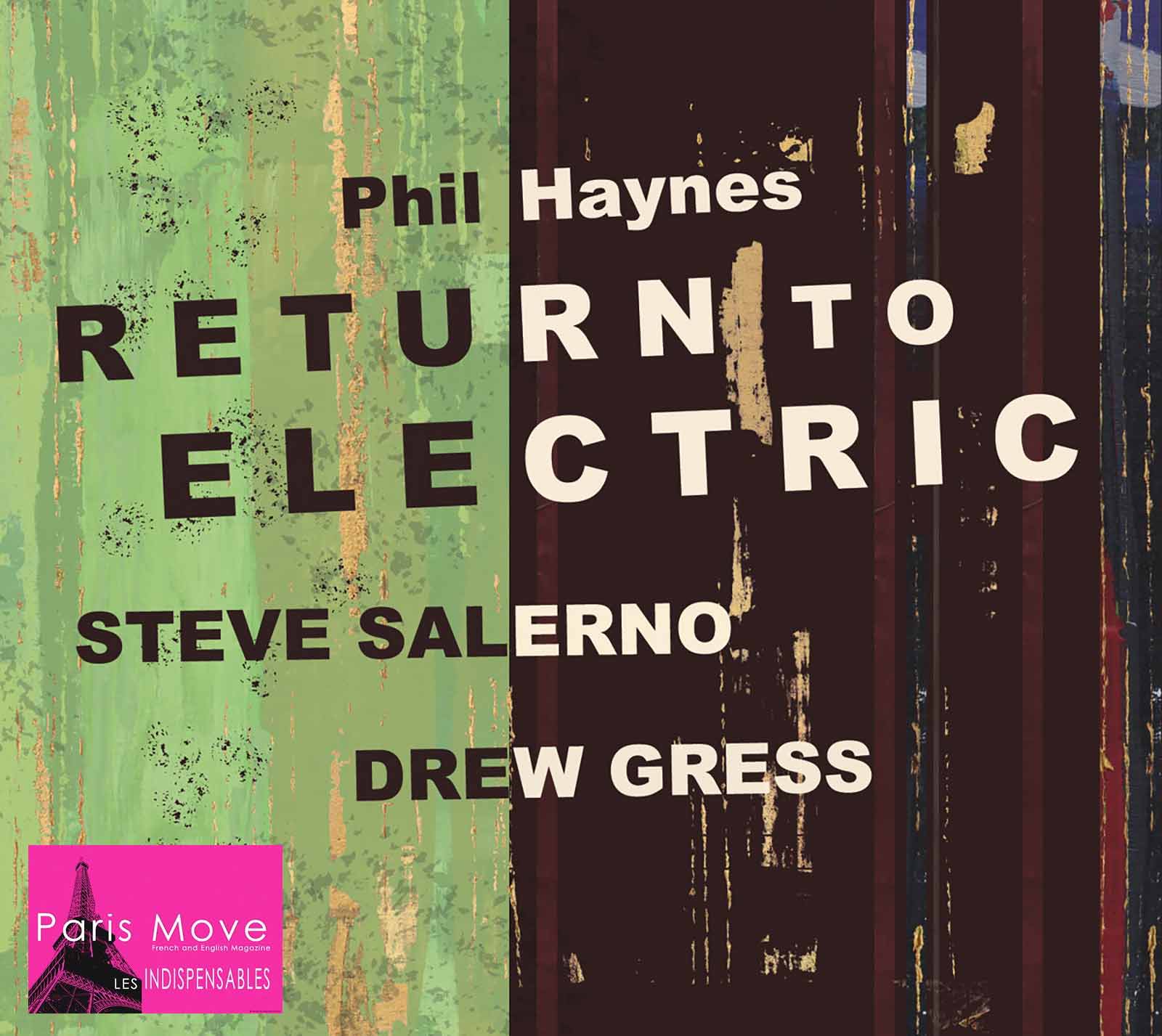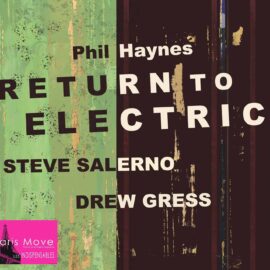| Jazz, Rock |

A second album by Phil Haynes is also set for release on April 21, this time in a less experimental mood. Sitting somewhere between fusion and jazz-rock, it’s once again Phil Haynes who explains the impulse behind the recording: “During my formative years — listening and ‘playing along’ with records and radio in the ’60s and ’70s, then throughout my college studies in the early ’80s — I was steeped in the iconic sounds of the electric guitar: B.B. King, Jimi Hendrix, the British Invasion, Broadway rock operas, and later the great jazz guitarists, from Wes Montgomery to Jim Hall, John Abercrombie, John McLaughlin, and so many others.”
Jazz today differs from its early incarnations in one essential way: its sources of inspiration are far more eclectic, transcending genres and borders. On this album, the atmosphere often evokes the rock-leaning sounds of certain British bands from the 1970s; though one might just as easily hear echoes of Joe Zawinul’s work. Once again, we’ll let Haynes elaborate: “In 1979, I met two longtime collaborators; guitarists Steve Salerno and Jim Yanda; at Coe College in Iowa, where Paul Smoker was our teacher, mentor, and a truly extraordinary friend. When I moved to New York in 1983, it wasn’t long before I was jamming with Ben Monder, then Brad Schoeppach (Shepik), and later Tom Chess and Adam Caine.”
At this point, the narrative begins to unfold like a well-crafted novel; the threads are there to trace, to understand where the story began. And what follows sketches the aftermath: “Strangely, after I left New York in 2003/2004, I rarely played or recorded with electric guitarists for over two decades; with a few exceptions involving Salerno (in Smoker’s ‘No-tet’); since Yanda’s ‘amplified acoustic’ approach didn’t quite count (lol!). I focused instead on acoustic performance: with the legendary Harrisburg pianist Steve Rudolph, guest artists at Bucknell University, my Free Country quartet, No Fast Food with Dave Liebman, and spontaneous improvisation groups with Herb Robertson, Ken Filiano, and Thomas Heberer.”
Now, the return to electric: as the tracks unfold, the past comes rushing back; sonically, spiritually; reviving the textures of the ’70s and ’80s, a resurrection all the more striking given how far music has drifted since. And yet, the rhythmic drive anchors the project firmly in the present. The music may at times feel unbounded, but it is anything but chaotic — a jazz architecture that holds together beneath the surface. A track like “Paul/ Christian” even gently reels us back toward more familiar, more lyrical ground.
This is jazz that is urban, intellectual; perhaps more accessible than the simultaneously released Transition[s], but no less intricate.
It’s impossible to fully appreciate this album without a sense of 20th-century musical history. Those who were teenagers in the ’70s and ’80s will recognize the touchstones immediately; others may be captivated by the kind of creative daring that today survives mostly in jazz and its many offshoots. And indeed, this may be one of the most surprising and quietly subversive albums of recent memory — the kind of record to guard jealously in your collection, and to bring out only in the company of true connoisseurs.
Thierry De Clemensat
Member at Jazz Journalists Association
USA correspondent for Paris-Move and ABS magazine
Editor for All About Jazz
Editor in chief – Bayou Blue Radio, Bayou Blue News
PARIS-MOVE, April 14th 2025
Follow PARIS-MOVE on X
::::::::::::::::::::::
Musicians: Steve Salerno: guitar, Drew Gress: bass, Phil Haynes: drums
Tracks: Crystal Silence; Spectrum; Living Time; Spell; Cadenza Paul/ Christian; Cycle; Eclipse; Cadenza; Lotus On Irish Springs; Some Slick Sick; Cadenza; Paraphernalia
